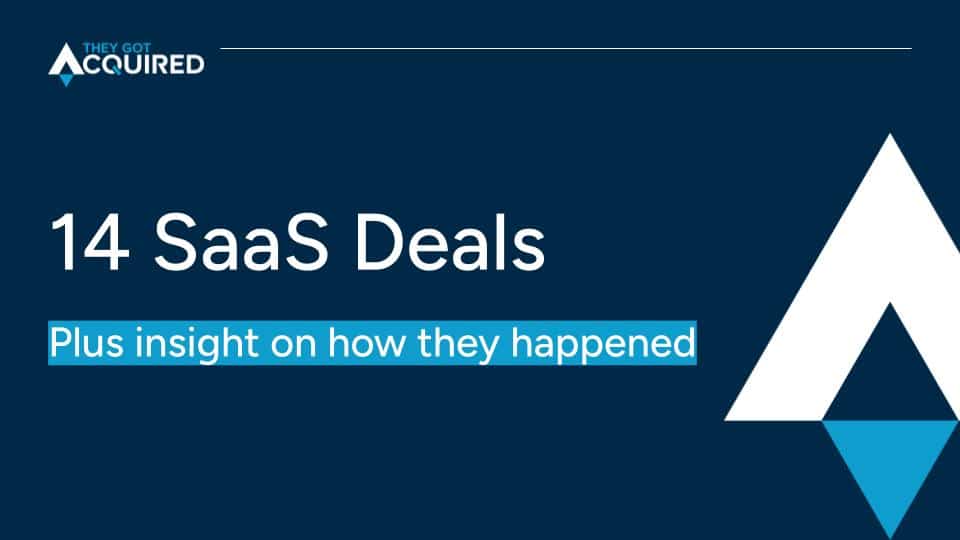Bootstrapped, HiddenLevers got a quiet start in 2010. But when the software company sold 11 years later, it generated a headline-worthy multiple at 16x revenue.
Atlanta-based founders Praveen Ghanta and Raj Udeshi built the financial risk management and proposal generation software in 2010, but “it took us 18 months to find any semblance of product market fit,” Ghanta said.
They tested different audiences in the financial space, and “we had no idea who would actually buy this software,” he said. Finally, they found the sweet spot: financial advisors.
By the time HiddenLevers sold, around 450 advisory firms — comprising approximately 3,000 financial advisors — used the software.
How HiddenLevers found their target customer after 18 months
HiddenLevers was a stock portfolio and risk management software that helped financial advisors and their clients understand how various economic factors (so-called hidden levers) impacted their investments.
The idea sparked when Ghanta, who graduated with computer science and economic degrees from MIT and spent years working on Wall Street, wanted to know which energy stocks were most correlated with oil prices, he shared on the Practical Founders Podcast.
“I couldn’t find that information publicly out there on the internet, so I was like, ‘well, I guess I have to write the code to do this analysis myself,’” he said.
From there, he began digging into other correlations. The analysis wasn’t unique — hedge funds do this every day on Wall Street — but it’s not accessible to the average person. In addition to finding investments, the analysis also answered the question: “What happens to my portfolio if…?” For example, what happens if interest rates rise? If home prices fall?
Ghanta tapped his friend Udeshi, who became a co-founder, to help pitch and sell the software. They met with discount investment brokers, like Fidelity, who showed no interest. They talked to the financial media, retail investors and more — before landing on financial advisors who wanted the software to, in part, help attract new clients.
2011 marked the year of price discovery. They debated prioritizing growth or revenue maximization and, being bootstrapped, ultimately leaned toward the latter. They incrementally raised the price of the software from $30/month at the beginning of the year to $300/month at the end of the year, which became their long-time entry price. By the beginning of 2012, about two years after they started the business, 200 firms paid for HiddenLevers.
As HiddenLevers grew, the scenario-based portfolio stress testing software continued to evolve.
“Even after the big players (e.g., BlackRock) came in as competitors, we kept an advantage: We were willing to publish new scenarios to adapt to global events in less than 24 hours,” Ghanta told They Got Acquired. “The competitors would be stuck in committee meetings for months.”
Over time, HiddenLevers also began offering automated risk-monitoring services for large firms.
By sale in 2021, HiddenLevers had about 450 advisory firms as customers. This isn’t a huge uptick from the 200 firms in 2012 — but the key was user growth, which grew to about 3,000 financial advisors, a 10x increase, Ghanta said on the Practical Founders Podcast. That enabled the company to earn more per customer.
HiddenLevers employed many fractional or part-time workers, which Ghanta equated to about 25 full-time employees. Hiring mostly part-time employees who worked about 20 hours a week helped the company grow initially.
For nine consecutive years, HiddenLevers grew at 60% with $8 million ARR (annual recurring revenue) at sale.
To raise money or to sell? Why HiddenLevers decided to sell
Around fall 2020, it became clear to the co-founders that HiddenLevers hit a ceiling.
“To continue [to grow] would have required building an enterprise sales team and potentially raising a major PE round to go up against larger scale competitors,” Ghanta told us.
But he wasn’t keen on raising money.
He explained one reason why on the Practical Founders Podcast. “If we got to the point where it was just add money and watch it grow, then you raise money,” he said. “But I never felt like it was quite that easy. There was always some battle to fight… I don’t want to go raise a bunch of money that I don’t know how to spend correctly because then we have a new problem to solve.”
The answer became clear. “We decided that selling in a high valuation market to a strategic buyer was a better outcome for the company and team,” Ghanta told us. This was during the pandemic, when software multiples were at an all-time high.
Their advisor, PJT Partners, reached out to around 40 potential buyers, and Ghanta and Udeshi had conversations with about six or eight of those. Ultimately, they got about three term sheets and, after a competitive bidding process, Orion Advisor Solutions came out on top.
Orion was actually one of HiddenLevers’ oldest software integration partners, but Ghanta doesn’t regret using an advisory firm to find the buyer.
“I think that going through a formal process was helpful in that it created a competitive environment as opposed to us going directly [to Orion],” Ghanta said on Practical Founders.
The advisor also played peacemaker. Ghanta and Udeshi are strong negotiators, so when the environment got tense, their advisor could step in.
After the letter of intent was signed, due diligence began.
“The due diligence process is tougher than anyone can imagine,” Ghanta told us. “Imagine playing the highest stakes poker game you will ever play. You have the most power right before the LOI is signed, and you are powerless the day before the due diligence period ends, which is when they spring the trap on you.”
He compared it to buying a house. If a buyer is going to renegotiate, then they’ll do it right before due diligence expires.
“Expect buyers to lower the price until you are willing to walk,” he said. “You have to have the courage to take a stand and say ‘no’ when your line has been reached.”
Ghanta and Udeshi agreed on a number and refused to go lower. It worked.
They couldn’t disclose the exact sale price — just that it was low 9 figures — but with the $8 million ARR and 16x revenue multiple, you can do the math.
In an acquisition announcement, Orion CEO Eric Clarke said: “We think this is a tremendous opportunity for us to not buy a business that is on defense. They’re playing offense. This is an Ohio State football-style acquisition for us. These guys are an A-plus for portfolio risk analytics.”
Wealth Management reported that, by embedding HiddenLevers into its tech stack, Orion can “compete all the more effectively with the likes of industry behemoth Envestnet and others.”
After the sale, the HiddenLevers co-founders stayed on as senior executives for a year to help with the transition. Their staffers folded into Orion, according to RIABiz.
Now, Ghanta has launched a new company, Fraction.
“Fractional hiring worked so well for me at HiddenLevers that I decided to build a new company to scale that concept out to other startups,” he told us. “The best talent already has a job — why not hire them fractionally?”
When it comes to selling a company, Ghanta leaves this advice for founders: “When you want to sell, no one wants to buy. When everyone wants to buy, you won’t want to sell. You’ve got to balance those and sell at just the right time, when you feel the biz might be peaking.”



